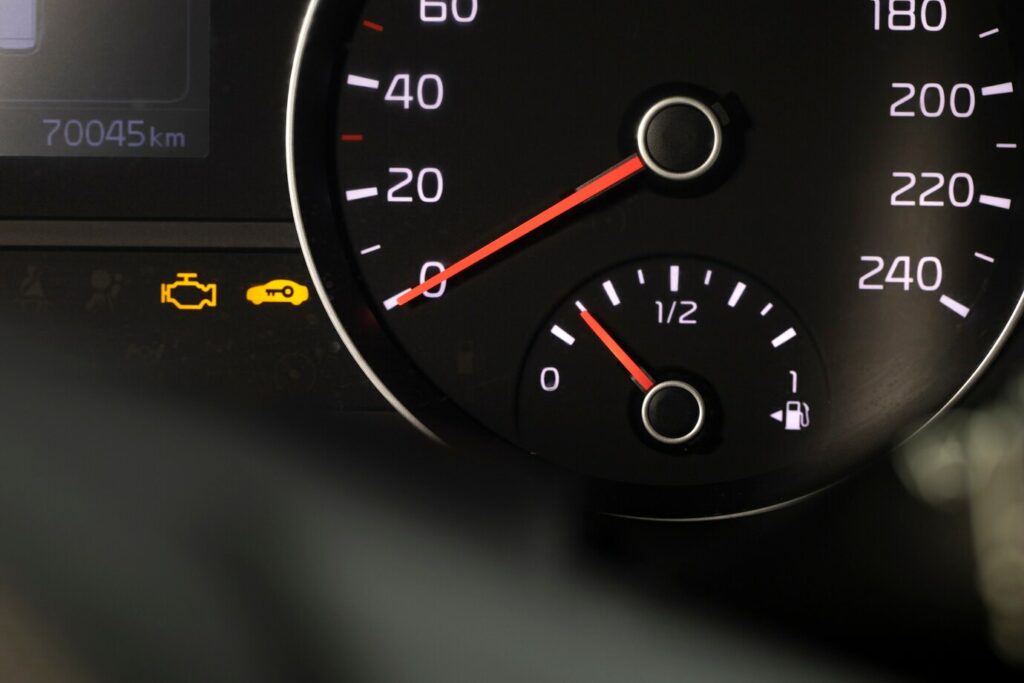You might not think about it often, but your car’s oxygen sensor plays a significant role in its daily performance. From ensuring your vehicle runs efficiently to reducing harmful emissions, these sensors help keep everything running smoothly. But what is the function of an oxygen sensor exactly? Let’s dive deeper into how these sensors work and why they are vital to your vehicle’s health.

What Is An Oxygen Sensor: 2 Types Explained

What are O2 sensors in cars? These essential components help monitor and control the vehicle’s engine performance by measuring the oxygen levels in the exhaust. There are two main types of oxygen sensors commonly used: narrowband and wideband. Each type plays a unique role in helping the engine control unit (ECU) regulate the air-fuel mixture for optimal performance and efficiency. Let’s explore the differences between these two types of sensors.
Narrowband
Narrowband oxygen sensors are designed to monitor the air-fuel ratio in a relatively limited range. Typically found in older vehicles, these sensors provide basic feedback to the engine control unit (ECU) by signaling whether the mixture is rich (too much fuel) or lean (too little fuel). The narrowband sensor operates within a voltage range of 0.1 para 0.9 volts, fluctuating as it detects changes in oxygen levels in the exhaust. While not as precise as a wideband sensor, it serves its purpose in maintaining a rough balance for fuel efficiency and emissions control.
Wideband
Wideband oxygen sensors are more advanced and provide a wider range of oxygen measurements, allowing for more precise control over the air-fuel ratio. Unlike narrowband sensors, which only signal rich or lean mixtures, wideband sensors give continuous, accurate data about oxygen levels throughout the exhaust gases. This allows the ECU to make finer adjustments to the fuel injection system, enhancing fuel efficiency, engine performance, and reducing harmful emissions. These sensors are typically found in newer vehicles that demand more precise engine management systems.
How an Oxygen Sensor Works
O oxygen sensor works by comparing the oxygen content in the exhaust gases to the oxygen content in the outside air. The science behind this sensing process lies in the materials used in the sensor itself: Zirconia and Titania. These materials allow the sensor to create an electrical signal based on the difference in oxygen concentration between the exhaust and the outside air.
Zirconia Sensors
Zirconia oxygen sensors are the most common and work by utilizing a ceramic material that reacts with oxygen. When the sensor is exposed to exhaust gases, the zirconia element creates a voltage signal that corresponds to the amount of oxygen in the gases. This voltage is then sent to the ECU, which adjusts the fuel-to-air ratio accordingly. The more oxygen in the exhaust, the lower the voltage; less oxygen results in a higher voltage. This allows the engine management system to maintain an optimal mixture.
Titania Sensors
Titania sensors, though less common than zirconia, are sometimes used in applications requiring a faster response time. Unlike zirconia sensors, which generate a voltage based on oxygen concentration, titania sensors change their resistance when exposed to varying oxygen levels. The ECU interprets this change in resistance to adjust fuel delivery. Titania sensors are often used in modern vehicles to support improved emissions standards.
What Is the Function of Oxygen Sensor in a Car?
The function of oxygen sensors in a car is multi-faceted, as they are integral to both engine performance and emissions control. Em essência, these sensors monitor and manage the engine’s air-fuel ratio, ensuring that the engine operates efficiently while minimizing environmental impact.
Monitor Air-Fuel Ratio
One of the primary functions of an oxygen sensor is to monitor the air-fuel ratio within the engine. By detecting the oxygen level in the exhaust, the sensor provides feedback to the ECU, which adjusts the amount of fuel injected into the combustion chamber. A balanced air-fuel ratio is critical for achieving optimal engine performance, saída de energia, and fuel efficiency.
Enhance Fuel Economy
Another vital function of the oxygen sensor is its role in improving fuel economy. By constantly adjusting the air-fuel mixture for optimal combustion, the sensor ensures that the engine uses fuel more efficiently. This results in less fuel consumption for the same output, contributing to reduced fuel costs over time.
Reduce Harmful Emissions
The oxygen sensor also plays a key role in reducing harmful emissions. By monitoring the air-fuel ratio and ensuring efficient combustion, the sensor helps reduce the production of pollutants such as carbon monoxide (CO), hydrocarbons (HC), and nitrogen oxides (NOx). This function is essential for meeting stringent environmental regulations and improving air quality.
What Are Symptoms of a Faulty Oxygen Sensor?

When an oxygen sensor becomes faulty, it can cause a variety of issues, including poor engine performance, economia de combustível reduzida, and increased emissions. Common symptoms of a faulty oxygen sensor include:
- Illuminated Check Engine Light: A malfunctioning oxygen sensor will trigger the check engine light, alerting the driver to a potential issue.
- Poor Fuel Efficiency: If the sensor is not providing accurate data, the ECU may inject too much fuel into the engine, leading to decreased fuel economy.
- Rough Engine Idle or Misfires: A faulty sensor can result in erratic engine behavior, such as rough idling or engine misfires.
- Increased Emissions: A failing oxygen sensor may lead to higher-than-normal emissions, which can cause the vehicle to fail emissions testing.
What Does O2 Sensor Circuit Malfunction Mean?
An O2 sensor circuit malfunction typically indicates a problem with the electrical connection or signal from the oxygen sensor. This can be caused by damaged wiring, corroded connectors, or a faulty sensor itself. When the circuit malfunctions, the ECU cannot receive accurate oxygen data, leading to improper fuel management and, eventually, engine performance issues. A diagnostic trouble code (DTC) will usually be stored in the vehicle’s onboard computer, which can be retrieved using a scan tool to pinpoint the exact issue.
How to Maintain and Replace Oxygen Sensors?
The function of oxygen sensors is critical to maintaining your vehicle’s performance and reducing emissions. Ao longo do tempo, these sensors can wear out due to exposure to high temperatures, contaminantes, or general aging. Regular maintenance and timely replacement are key to ensuring they continue working efficiently. Here’s how to properly maintain and replace your oxygen sensors.
Maintenance Tips
- Check for Exhaust Leaks: Small exhaust leaks can lead to incorrect readings from the oxygen sensor. Inspect your exhaust system regularly for any cracks or holes that could interfere with sensor accuracy.
- Regular Engine Tune-Ups: Keep your engine running smoothly with routine maintenance, such as changing the air filter and replacing worn fuel injectors. This helps reduce strain on the oxygen sensor and can extend its lifespan.
- Keep the Engine Temperature in Check: High temperatures can damage the oxygen sensor over time. Avoid overheating the engine by monitoring the coolant levels and ensuring the radiator is working efficiently.
- Avoid Contaminants: Keep fuel and exhaust systems clean. Contaminants like oil or antifreeze can poison the oxygen sensor, leading to false readings and premature failure.
Replacement Instructions
- Locate the Sensor: Oxygen sensors are typically located along the exhaust pipe, either before or after the catalytic converter. Refer to your vehicle’s manual to find the exact location.
- Disconnect the Battery: Before removing the sensor, disconnect the vehicle’s battery to avoid electrical shock and to prevent triggering error codes.
- Remove the Faulty Sensor: Use a wrench or specialized oxygen sensor socket to carefully unscrew and remove the old sensor. Take note of the sensor’s position for the correct placement of the new one.
- Install the New Sensor: Thread the new sensor into place, ensuring it is tightened securely but not overtightened. Reconnect the electrical connector.
- Reconnect the Battery: After installing the new sensor, reconnect the battery and clear any error codes using an OBD-II scanner. Test drive the vehicle to ensure the sensor is working correctly.
Conclusão
In short, the mastery of what is the function of an oxygen sensor helps maintain a balanced air-fuel ratio, boost fuel efficiency, minimize emissions, and protect your engine from damage. If you’re noticing issues with performance or fuel economy, it may be time to check your oxygen sensor. Regular maintenance can ensure your car stays in top shape for years to come.

























